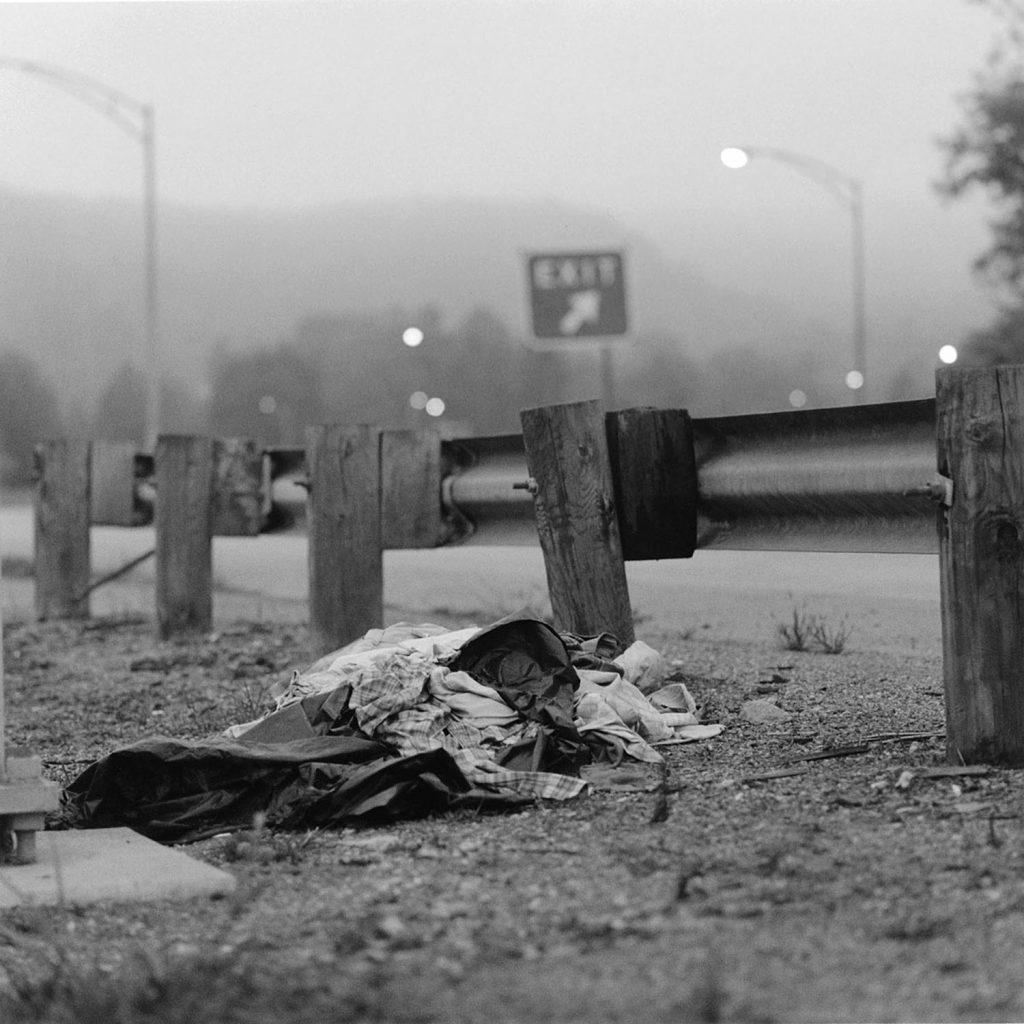

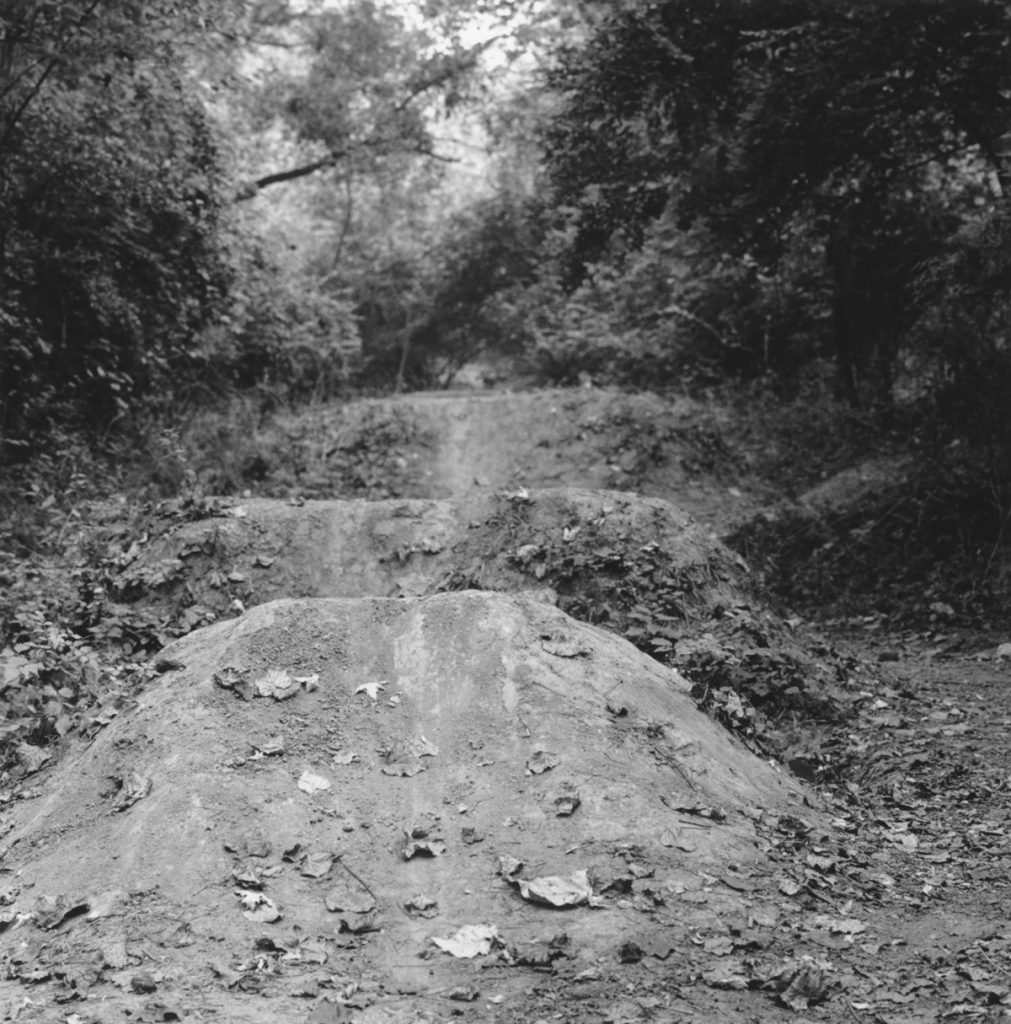

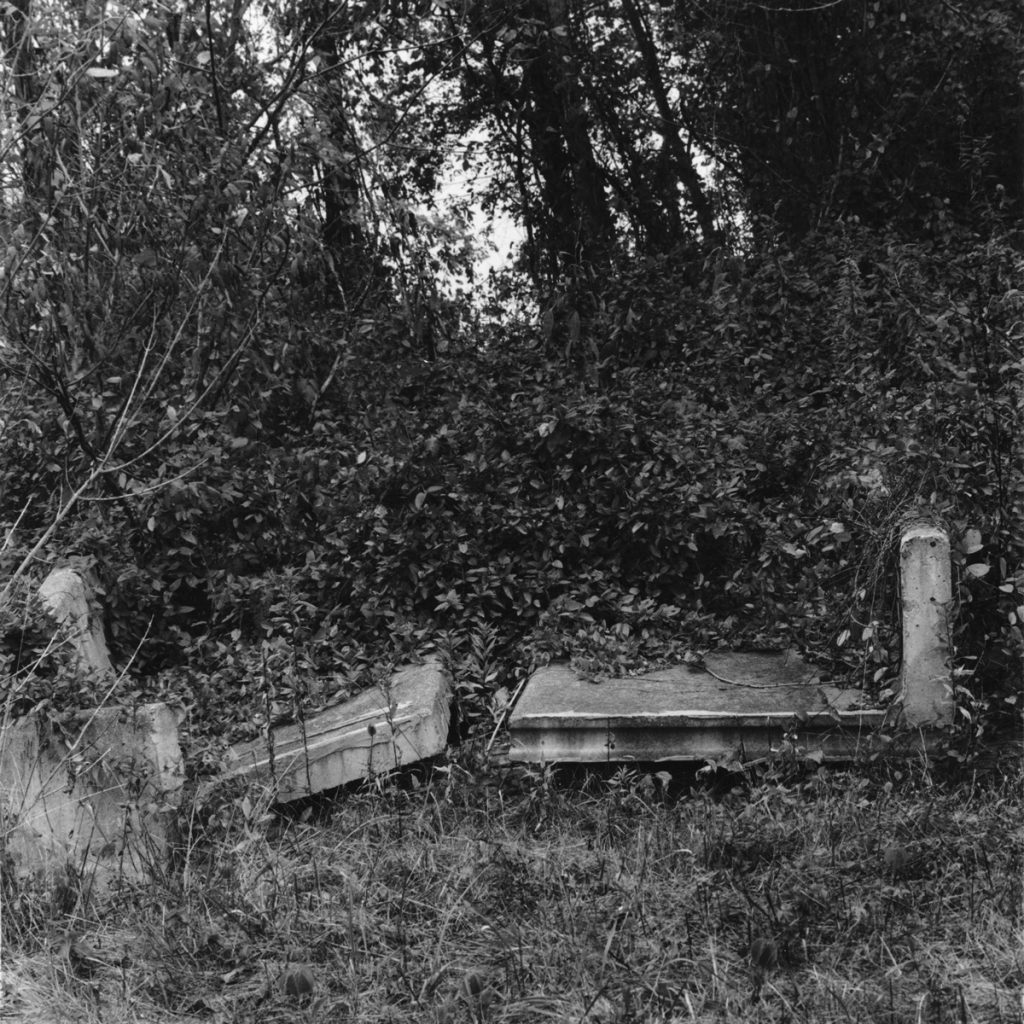

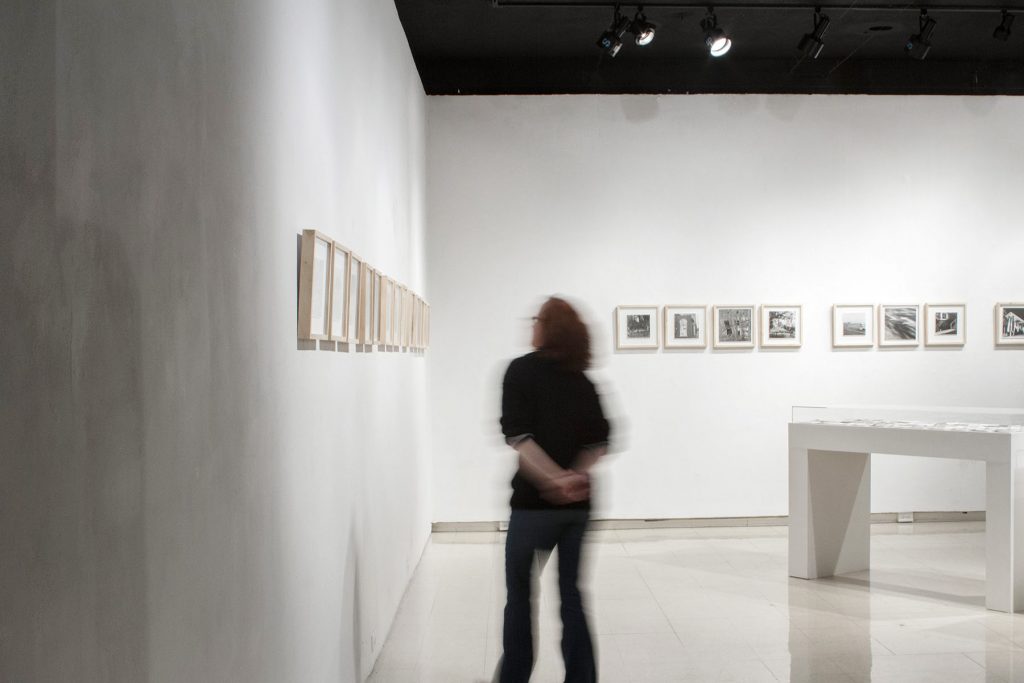
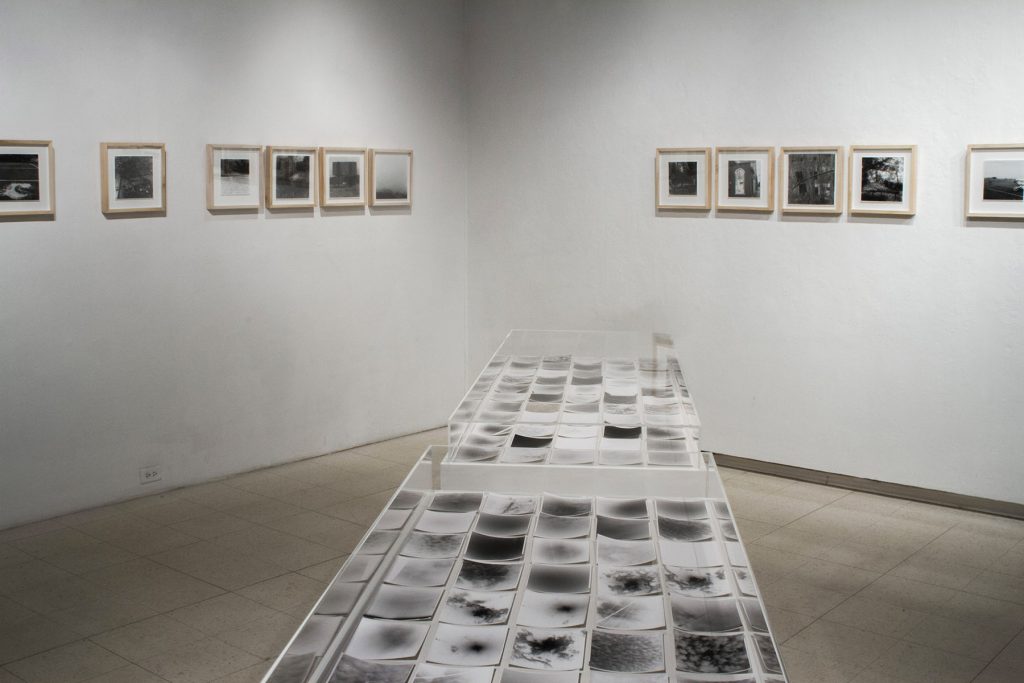
STATEMENT
Living in two or more places simultaneously led to a growing awareness of the role that the infrastructure of the highway plays in connecting home, work, family, and community. Relocation and rearrangement, as necessary for sustaining oneself in the increasingly complex world, and more specifically for my graduate school studies, was the catalyst for my increased awareness of space and place from 2012 to 2015.
The limited access highway system plays a ubiquitous function in activating experiences of both the mundane and the exceptional. As conduit architecture, it’s designed for efficiency and industry rather than geographic awareness and sensitivity to place. My goal was to embark on a journey to become sensitized to peripheral space, to allow the act of framing the visible world to curl in on itself, to include the role of memory in the latent potential of experiencing place. By recognizing the layers of mediation defining my relationship to place I also embrace accidents, subversion, dislocation and the anxiety of the unknown.
I focused on a repeated route, a routine drive from Athens to Columbus and back, to explore the potential for framing the peripheral as central. I began searching for means of egress, points of exit from our built environment, where velocity, distance, and proximity are less defined and therefore less immediate. The simple act of exiting the highway, pulling off to the side of the road, and walking into an open field was a way to access these idiosyncratic peripheral spaces which incite questions of form, function, and buried narrative. These are places where past and present infrastructure, industry, and the marks of time exist in visible strata. By framing these spaces through a variety of distances and visual devices I develop the subjective and associative potential of the image as it relates to the experience of the geography.
What I discovered was the potential for narrative dissonance that exists in any thoughtful accounting of the geographic landscape of the America midwest, specifically Southern Ohio. These images attest to what was, what is, and what will never be again.